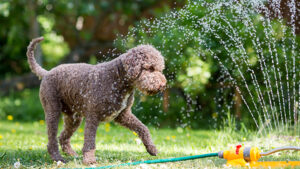Heat stroke is life-threatening when a pet’s body temperature rises rapidly and cannot be controlled. Certain breeds of animals are more vulnerable to heat stroke due to their physical characteristics, such as thick coats, short muzzles, or brachycephalic (flat-faced) features.
It’s important to note that individual animals within any breed can react differently to heat, and other factors like age, overall health, especially pets with respiratory issues, and activity level also play a role in their vulnerability to heat stroke. Therefore, keeping all pets safe during hot weather is crucial, regardless of their breed or physical characteristics.
Always provide access to shade, fresh water, and a cool environment, and avoid leaving pets in parked cars or exposed to direct sunlight for extended periods. If you suspect your pet suffers from heat stroke (signs include excessive panting, drooling, weakness, vomiting, and collapse), seek immediate veterinary attention. It is vital to be vigilant and identify the signs of heat stroke, including:
Dogs
- Excessive panting and drooling
- Rapid heartbeat
- Weakness and fatigue
- Vomiting or diarrhea
- Reddened gums and tongue
- Collapsing or seizures
Cats
- Panting (cats rarely pant, so it’s a sign of distress)
- Restlessness and pacing
- Excessive grooming or drooling
- Lethargy and weakness
- Elevated body temperature
Birds
- Fluffed feathers
- Open-mouthed breathing
- Rapid breathing
- Lethargy and sitting on the bottom of the cage
- Loss of coordination or difficulty flying
Olivia Hernandez is a Veterinary Technology Program Director at Carrington College.





